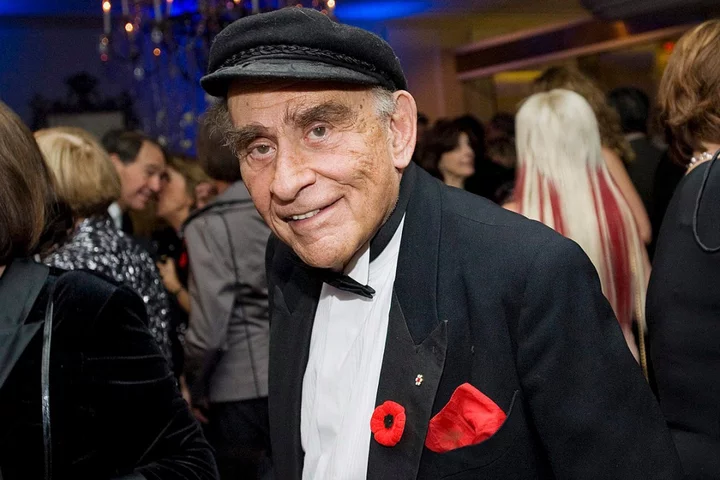
Canadian journalist and author Peter C. Newman dies at 94
Veteran Canadian journalist and author Peter C. Newman, who held a mirror up to Canada, has died. He was 94. Newman died in hospital in Belleville, Ontario, Thursday morning from complications related to a stroke he had last year and which caused him to develop Parkinson’s disease, his wife Alvy Newman said by phone. In his decades-long career, Newman served as editor-in-chief of the Toronto Star and Maclean’s magazine covering both Canadian politics and business. “It’s such a loss. It’s like a library burned down if you lose someone with that knowledge,” Alvy Newman said. “He revolutionized journalism, business, politics, history.” Often recognized by his trademark sailor’s cap, Newman also wrote two dozen books and earned the informal title of Canada’s “most cussed and discussed commentator,” said HarperCollins, one of his publishers, in an author's note. Political columnist Paul Wells, who for years was a senior writer at Maclean’s, said Newman built the publication into what it was at its peak, “an urgent, weekly news magazine with a global ambit. But more than that, Wells said, Newman created a template for Canadian political authors. "The Canadian Establishment’ books persuaded everyone — his colleagues, the book-buying public — that Canadian stories could be as important, as interesting, as riveting as stories from anywhere else,” he said. “And he sold truckloads of those books. My God.” That series of three books — the first of which was published in 1975, the last in 1998 — chronicled Canada’s recent history through the stories of its unelected power players. Newman also told his own story in his 2004 autobiography, “Here Be Dragons: Telling Tales of People, Passion and Power.” He was born in Vienna in 1929 and came to Canada in 1940 as a Jewish refugee. In his biography, Newman describes being shot at by Nazis as he waited on the beach at Biarritz, France, for the ship that would take him to freedom. “Nothing compares with being a refugee; you are robbed of context and you flail about, searching for self-definition,” he wrote. “When I ultimately arrived in Canada, what I wanted was to gain a voice. To be heard. That longing has never left me.” That, he said, is why he became a writer. The Writers’ Trust of Canada said Newman’s 1963 book “Renegade in Power: The Diefenbaker Years” about former Prime Minister John Diefenbaker had “revolutionized Canadian political reporting with its controversial ‘insiders-tell-all’ approach.” Newman was appointed to the Order of Canada in 1978 and promoted to the rank of companion in 1990, recognized as a “chronicler of our past and interpreter of our present.” Newman won some of Canada’s most illustrious literary awards, along with seven honorary doctorates, according to his HarperCollins profile. Read More Ukraine war’s heaviest fight rages in east - follow live Charity boss speaks out over ‘traumatic’ encounter with royal aide Chicago to move migrants from police stations to tent camps before winter under mayor's plan Teens killed in car by deputy in upstate New York were 15 and 17, police say Texas AG Ken Paxton's impeachment trial defense includes claims of a Republican plot to remove him
2023-09-08 06:58

Elon Musk thwarted Ukrainian drone attack on Russian ships, book claims
Elon Musk ordered SpaceX engineers to cut off Ukrainian access to Starlink satellites near the Crimean coast to prevent a surprise drone attack on Russian warships, a new biography claims. The drones packed with explosives “lost connectivity and washed ashore harmlessly” during the thwarted attack some time last year, Walter Isaacson writes in his upcoming book Elon Musk, according to an excerpt obtained by CNN. Mr Musk told the author that he feared a strike on occupied Crimea would amount to a “mini-Pearl Harbour” and lead to a Russian nuclear retaliation, Mr Isaacson writes. The decision led Ukrainian officials to beg the world’s richest person to reinstate the satellites. The account highlights how Mr Musk unwittingly found himself thrust into the frontlines of the the 18-month-old conflict. “How am I in this war?” Mr Musk reportedly asked the writer, who has previously published biographies of Steve Jobs and Henry Kissinger. “Starlink was not meant to be involved in wars. It was so people can watch Netflix and chill and get online for school and do good peaceful things, not drone strikes.” The world’s richest man found himself thrust into the world of high-stakes diplomacy, and reportedly spoke to US national security adviser Jake Sullivan, joint chiefs chairman Mark Milley and the Russian ambassador to the US. Ukraine’s former deputy prime minister Mykhailo Fedorov also contacted Mr Musk to beg him to switch the satellites back on, according to the book. The SpaceX CEO replied that the drone attack was “going too far and inviting strategic defeat,” and declined to restore access. SpaceX has donated more than 20,000 Starlink terminals to Ukraine after Russia destroyed much of the country’s infrastructure in the beginning of the war in February 2022. Last October, Mr Musk wrote to the Pentagon to say that it could no longer afford to continue funding the service, which he estimated had cost the company hundreds of millions of dollars, CNN revealed at the time. After the story broke, Mr Musk wrote on Twitter, now known as X: “The hell with it … we’ll just keep funding Ukraine govt for free.” According to Mr Isaacson, US Defense officials had been about to hand over a $145m check before his reversal. “Elon succumbed to the bulls*** on Twitter and to the haters at the Pentagon who leaked the story,” SpaceX’s president Gwynne Shotwell reportedly told Mr Isaacson. SpaceX did not immediately respond to a request for comment by The Independent. In a promotional blurb, publishers Simon & Schuster say that Mr Isaacson shadowed Mr Musk for two years to gain an insight into every aspect of the billionaire’s world. The author “attended his meetings, walked his factories with him, and spent hours interviewing him, his family, friends, coworkers, and adversaries”. “The result is the revealing inside story, filled with amazing tales of triumphs and turmoil, that addresses the question: are the demons that drive Musk also what it takes to drive innovation and progress?” * Elon Musk by Walter Isaacson is set to be realeased by Simon & Schuster on 12 September Read More First photo emerges of Elon Musk and his baby twins with Neuralink director How Ukraine’s month-long drone assault has brought the war home for Russians Elon Musk vows to sue ADL for calling him antisemitic after he promoted antisemitic campaign on X The Body in the Woods | An Independent TV Original Documentary The harrowing discovery at centre of The Independent’s new documentary
2023-09-08 02:18

What are depleted uranium shells? The controversial armour-piercing muntions being used in Ukraine
The depleted uranium anti-tank rounds soon to be in Ukraine’s military stockpiles have kicked up a debate over its use in the continuing Russian invasion. Announced by the Pentagon in the latest military tranche on Wednesday, the controversial rounds have spread alarm among Vladimir Putin’s ministers who have warned against the escalation yet again. Britain has already promised armour-piercing rounds containing depleted uranium to Ukraine in March. Prime minister Rishi Sunak had backed drawing out the rounds from the UK military’s stockpiles ultimately “to degrade and deter – primarily – Russian aggression”. But what are these depleted uranium munitions? The 120mm anti-tank shells made of depleted uranium are self-sharpening and flammable penetrator in munitions. They are made of naturally occurring Uranium which has been stripped of mostly – not all – of its radioactive matter. So while it is not a nuclear weapon in itself, it acts as a fuel and also as a great explosive that can be used in tank armour, pressed between sheets of steel armour plate. They can be paired with top-tier tanks Western nations have already provided to Ukraine, and are particularly expected to boost the performance of 31 M1A1 Abram tanks set to be sent to the war-hit nation this fall. These rounds first emerged in the 1970s when the US army started making the armour-piercing rounds and has since used it along with tank armour to multiply the firing effect. Incredibly dense, more than lead, depleted uranium is considered a top-tier choice for projectiles. When fired, it becomes “essentially an exotic metal dart fired at an extraordinarily high speed”, RAND senior defence analyst Scott Boston said. “It’s so dense and it’s got so much momentum that it just keeps going through the armour – and it heats it up so much that it catches on fire,” Edward Geist, a nuclear expert at research organisation RAND said. The depleted uranium has also been added to the US ammunition fired by the Air Force’s A-10 close air support attack plane, known as the tank killer. Depleted uranium munitions, as well as depleted uranium-enhanced armour, have been previously used by US tanks in the 1991 Gulf War against Iraq’s T-72 tanks and again in the invasion of Iraq in 2003, as well as in Serbia and in Kosovo. Is the risk alarming? The UN nuclear watchdog has warned of the emissions of low levels of radiation from depleted uranium when handling and also warned of possible dangers of explosion. This is a bug, not a feature of the munition, says Mr Geist. Categorically, depleted uranium is not marked as a nuclear weapon. It is mainly a toxic chemical, as opposed to a radiation hazard. Particles in aerosols can be inhaled or ingested, and while most would be excreted again, some can enter the bloodstream and cause kidney damage. “High concentrations in the kidney can cause damage and, in extreme cases, renal failure,” the International Atomic Energy Agency has said. The US troops have questioned whether some of the ailments they now face were caused by inhaling or being exposed to fragments after a munition was fired or their tanks were struck, damaging uranium-enhanced armour. Experts have said that if the US military could find another material with the same density but without the radioactivity, it would likely switch. The IAEA has warned that handling of depleted uranium “should be kept to a minimum and protective apparel (gloves) should be worn” and “a public information campaign may, therefore, be required to ensure that people avoid handling the projectiles”. Initial signs of radioactivity from the Ukraine war have started trickling in. Russian foreign ministry spokesperson Maria Zakharova had recently claimed that the use of these munitions has already led to radioactive contamination. How has Russia reacted? In March, Russia was fuming after the Rishi Sunak administration announced it will give depleted uranium rounds to Ukraine, prompting them to issue nuclear threats. This time, after the US joined Britain in sending the depleted uranium shells, Moscow snapped and called the latest military aid of depleted uranium a “criminal act” beyond just escalation. “It is a reflection of Washington’s outrageous disregard for the environmental consequences of using this kind of ammunition in a combat zone. This is, in fact, a criminal act, I cannot give any other assessment,” Russian deputy foreign minister Sergei Ryabkov said. He also reiterated previous warnings by Russia about the risk of a nuclear war, because of what he called Western “pressure” on Moscow. “Now this pressure is dangerously balancing on the brink of direct armed conflict between nuclear powers,” he said. In March, Vladimir Putin had warned that Moscow would "respond accordingly, given that the collective West is starting to use weapons with a ‘nuclear component.’” Several days later, Putin said Russia’s response will see Moscow stationing tactical nuclear weapons in neighbouring Belarus, action to which effect was announced in July as Putin and the Belarusian president said they had already shipped some of the weapons. Read More The Body in the Woods | An Independent TV Original Documentary The harrowing discovery at centre of The Independent’s new documentary US sends Ukraine controversial depleted uranium weapons that can pierce tank armour UN nuclear watchdog report seen by AP says Iran slows its enrichment of near-weapons-grade uranium Kyiv drones explode near Moscow and military HQ as Russia on defensive – live
2023-09-07 22:57
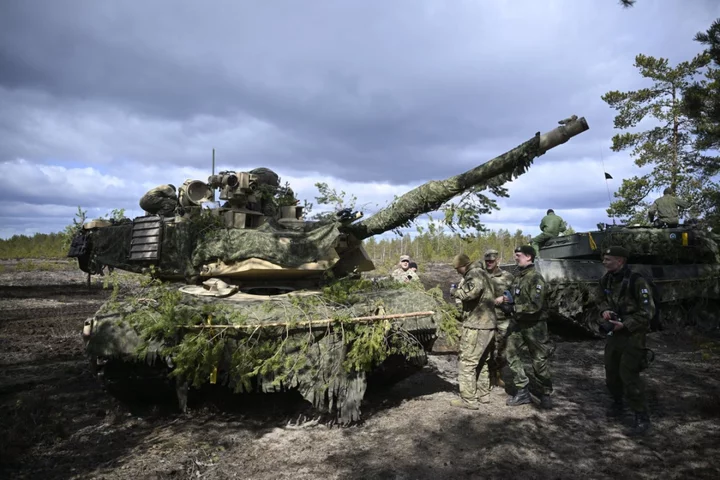
What are depleted uranium munitions being used in Ukraine and why are they controversial?
The depleted uranium anti-tank rounds soon to be in Ukraine’s military stockpiles have kicked up a debate over its use in the continuing Russian invasion. Announced by the Pentagon in the latest military tranche on Wednesday, the controversial rounds have spread alarm among Vladimir Putin’s ministers who have warned against the escalation yet again. Britain has already promised armour-piercing rounds containing depleted uranium to Ukraine in March. Prime minister Rishi Sunak had backed drawing out the rounds from the UK military’s stockpiles ultimately “to degrade and deter – primarily – Russian aggression”. But what are these depleted uranium munitions? The 120mm anti-tank shells made of depleted uranium are self-sharpening and flammable penetrator in munitions. They are made of naturally occurring Uranium which has been stripped of mostly – not all – of its radioactive matter. So while it is not a nuclear weapon in itself, it acts as a fuel and also as a great explosive that can be used in tank armour, pressed between sheets of steel armour plate. They can be paired with top-tier tanks Western nations have already provided to Ukraine, and are particularly expected to boost the performance of 31 M1A1 Abram tanks set to be sent to the war-hit nation this fall. These rounds first emerged in the 1970s when the US army started making the armour-piercing rounds and has since used it along with tank armour to multiply the firing effect. Incredibly dense, more than lead, depleted uranium is considered a top-tier choice for projectiles. When fired, it becomes “essentially an exotic metal dart fired at an extraordinarily high speed”, RAND senior defence analyst Scott Boston said. “It’s so dense and it’s got so much momentum that it just keeps going through the armour – and it heats it up so much that it catches on fire,” Edward Geist, a nuclear expert at research organisation RAND said. The depleted uranium has also been added to the US ammunition fired by the Air Force’s A-10 close air support attack plane, known as the tank killer. Depleted uranium munitions, as well as depleted uranium-enhanced armour, have been previously used by US tanks in the 1991 Gulf War against Iraq’s T-72 tanks and again in the invasion of Iraq in 2003, as well as in Serbia and in Kosovo. Is the risk alarming? The UN nuclear watchdog has warned of the emissions of low levels of radiation from depleted uranium when handling and also warned of possible dangers of explosion. This is a bug, not a feature of the munition, says Mr Geist. Categorically, depleted uranium is not marked as a nuclear weapon. It is mainly a toxic chemical, as opposed to a radiation hazard. Particles in aerosols can be inhaled or ingested, and while most would be excreted again, some can enter the bloodstream and cause kidney damage. “High concentrations in the kidney can cause damage and, in extreme cases, renal failure,” the International Atomic Energy Agency has said. The US troops have questioned whether some of the ailments they now face were caused by inhaling or being exposed to fragments after a munition was fired or their tanks were struck, damaging uranium-enhanced armour. Experts have said that if the US military could find another material with the same density but without the radioactivity, it would likely switch. The IAEA has warned that handling of depleted uranium “should be kept to a minimum and protective apparel (gloves) should be worn” and “a public information campaign may, therefore, be required to ensure that people avoid handling the projectiles”. Initial signs of radioactivity from the Ukraine war have started trickling in. Russian foreign ministry spokesperson Maria Zakharova had recently claimed that the use of these munitions has already led to radioactive contamination. How has Russia reacted? In March, Russia was fuming after the Rishi Sunak administration announced it will give depleted uranium rounds to Ukraine, prompting them to issue nuclear threats. This time, after the US joined Britain in sending the depleted uranium shells, Moscow snapped and called the latest military aid of depleted uranium a “criminal act” beyond just escalation. “It is a reflection of Washington’s outrageous disregard for the environmental consequences of using this kind of ammunition in a combat zone. This is, in fact, a criminal act, I cannot give any other assessment,” Russian deputy foreign minister Sergei Ryabkov said. He also reiterated previous warnings by Russia about the risk of a nuclear war, because of what he called Western “pressure” on Moscow. “Now this pressure is dangerously balancing on the brink of direct armed conflict between nuclear powers,” he said. In March, Vladimir Putin had warned that Moscow would "respond accordingly, given that the collective West is starting to use weapons with a ‘nuclear component.’” Several days later, Putin said Russia’s response will see Moscow stationing tactical nuclear weapons in neighbouring Belarus, action to which effect was announced in July as Putin and the Belarusian president said they had already shipped some of the weapons. Read More The Body in the Woods | An Independent TV Original Documentary The harrowing discovery at centre of The Independent’s new documentary Ukraine war: What are depleted uranium shells and why are they controversial? US sends Ukraine controversial depleted uranium weapons that can pierce tank armour UN nuclear watchdog report seen by AP says Iran slows its enrichment of near-weapons-grade uranium
2023-09-07 22:52
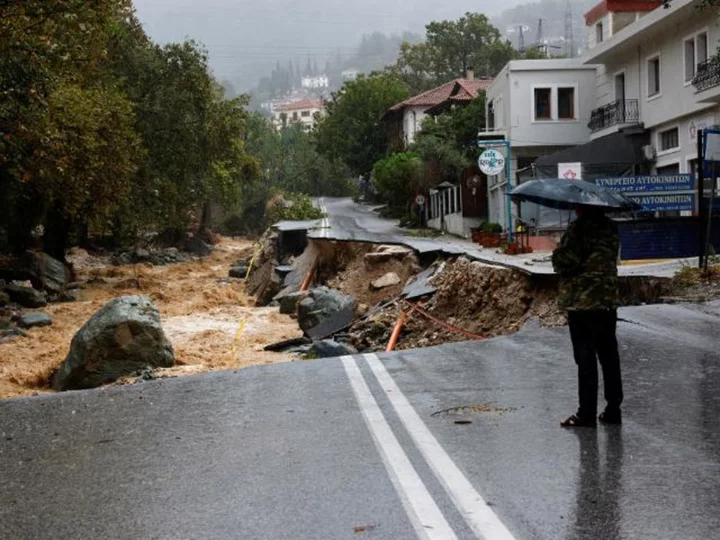
At least 13 killed as fierce storms and severe flooding lash southern Europe
At least 13 people have died and several remain missing across Greece, Turkey and Bulgaria as torrential rain and severe flooding batter southern Europe.
2023-09-07 18:48
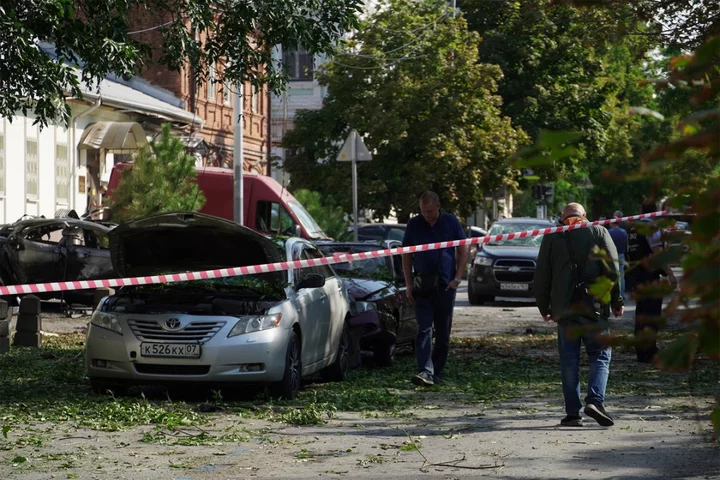
Russia-Ukraine war – live: Kyiv given controversial depleted uranium shells by US as drones downed near Moscow
Ukraine will be armed with depleted uranium anti-tank rounds that can aid its troops in piercing Russian tanks, the Pentagon has said, as Russia warns of “very sad consequences”. The controversial 120mm anti-tanks shells will be used to boost the performance of 31 M1A1 Abram tanks the US will also give Ukraine. The rounds, developed by the US during the Cold War, have previously destroyed Soviet tanks, including the decades old T-72 tanks dispatched by Moscow in the continuing war. The Kremlin said the United States would have to answer for the “very sad” consequences of its decision to provide depleted uranium munitions to Ukraine. Opponents of the weapons, such as the International Coalition to Ban Uranium Weapons, say the dust created by such weapons can be breathed in, while munitions which miss their target can poison groundwater and soil. It comes as Ukrainian drones heading to three Russian cities were shot down overnight, including Moscow, Rostov-on-Don and the Bryansk region. A Ukrainian drone targeted Moscow, but was shot down southeast of the city without causing any damage or injuries, mayor Sergei Sobyanin said. Read More From Challenger to Leopard: How Ukraine’s tanks compare to Russia’s A look at the uranium-based ammo the US is sending to Ukraine NATO member Romania says it has found drone pieces from Russian attacks in Ukraine on its territory Russian commander ‘used two military helicopters to transport his pet cat’
2023-09-07 18:45

UK rejoins EU science research scheme Horizon
UK-based scientists and institutions will have access to the £85bn fund from today.
2023-09-07 16:50
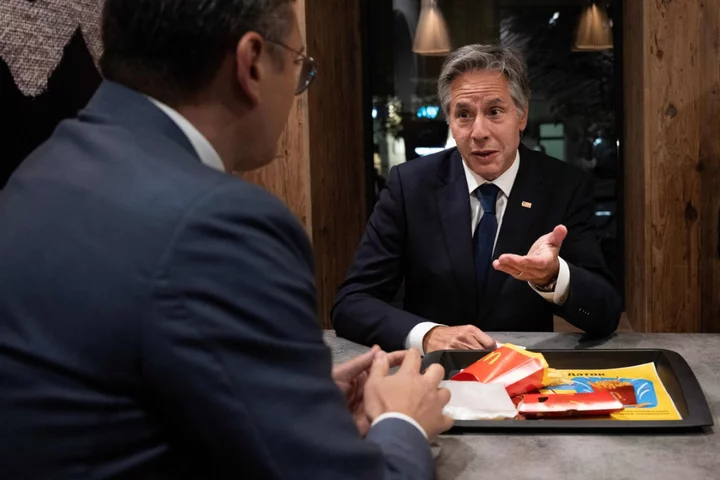
US sends Ukraine controversial depleted uranium weapons that can pierce tank armour
Ukraine will be armed with depleted uranium anti-tank rounds that can aid its troops in piercing Russian tanks, said the Pentagon. The controversial 120mm anti-tanks shells will be used to boost the performance of 31 M1A1 Abram tanks the US will give Ukraine in the fall. The US is looking to aid Kyiv in dismantling Russian lines in eastern, northeastern and southern regions amid a simmering counteroffensive by the Ukrainians. The rounds, developed by the US during the Cold War, have previously destroyed Soviet tanks, including the decades old T-72 tanks dispatched by Moscow in the continuing war. The 46th drawdown of military equipment from the Department of Defence includes additional air defence equipment, artillery rounds and anti-tank weapons, and was announced shortly after Secretary of State Antony Blinken met with his Ukrainian counterpart and foreign minister Dmytro Kuleba on Wednesday. “We want to make sure that Ukraine has what it needs not only to succeed in the counteroffensive but has what it needs for the long term to make sure that it has a strong deterrent, strong defence capacity so that, in the future, aggressions like this don’t happen again,” Mr Blinken said in a statement before the two leaders met. The UK had also announced in March that it would give depleted uranium rounds to Ukraine, leaving Russia fuming and falsely claiming they had provided nuclear components. On Thursday, Russia snapped at Washington and called the latest military aid of depleted uranium a “criminal act” beyond just escalation. “It is a reflection of Washington’s outrageous disregard for the environmental consequences of using this kind of ammunition in a combat zone. This is, in fact, a criminal act, I cannot give any other assessment,” said Russian deputy foreign minister Sergei Ryabkov. He also reiterated previous warnings by Russia about the risk of a nuclear war, because of what he called Western “pressure” on Moscow. “Now this pressure is dangerously balancing on the brink of direct armed conflict between nuclear powers,” he said. Russia has deployed hypersonic missiles to thermobaric weapons on civilian targets in its full-scale invasion of Ukraine which has continued for more than 20 months now. Officials in Moscow have never taken responsibility for explaining using ballistic Kinzhal missiles, a barrage of which was fired on Ukraine in March this year. The missile has a range of up to 2,000km (about 1,250 miles) and flies at 10 times the speed of sound, making it hard to intercept. In April this year, the British defence ministry said Russia is likely handing over thermobaric multiple launch rocket systems to its elite airborne forces, suggesting its use in the continuing war. Thermobaric weapons, fired using the multiple launch rocket systems, are considered to be some of the most brutal war weapons in existence. “The highly destructive TOS-1A, which Russia designates as a ‘heavy flamethrower’, is typically operated by Russia’s specialist Chemical, Biological and Radiological Protection Troops in Ukraine, and has not previously been formally associated with the VDV,” the ministry had said. Russia had admitted to using the flamethrower weapon in March last year. Also known as vacuum bombs, they suck in oxygen and generate a powerful explosion that can have a devastating impact on victims – especially in an enclosed space. In another attack, Russia used cluster bombs which killed a child and two adults hiding in a pre-school in northeastern Ukraine. While the depleted uranium rounds retain some radioactive properties, they can’t generate a nuclear reaction like a nuclear weapon would, RAND nuclear expert and policy researcher Edward Geist said. The Pentagon has defended the use of the munitions. The US military “has procured, stored, and used depleted uranium rounds for several decades, since these are a longstanding element of some conventional munitions,” Pentagon spokesman Marine Corps Lt Col Garron Garn said in a statement in March. Read More The Body in the Woods | An Independent TV Original Documentary The harrowing discovery at centre of The Independent’s new documentary UN nuclear watchdog report seen by AP says Iran slows its enrichment of near-weapons-grade uranium Ukraine war: US send depleted uranium to Kyiv after blast near Russia military base Greek shipper pleads guilty to smuggling Iranian crude oil and will pay $2.4 million fine
2023-09-07 16:27

Three in hospital after car hits people outside pub
Two women and a man, aged in their 50s and 60s, have been taken to Letterkenny University Hospital.
2023-09-07 15:55

China Sending Envoys to North Korea Before Kim’s Russia Trip
China plans to send its second high-profile delegation to North Korea in less than two months, just before
2023-09-07 13:47

Russia-Ukraine war – live: Putin trying to lure Cuban fighters into army with contracts worth thousands
Cuban nationals are being offered contracts worth $2,000 (£1,600) a month and potential Russian citizenship to join Vladimir Putin’s forces in the battle for Ukraine. The targeted campaign, which is also offering citizenship to the families of the Cubans, has come with the objections of the central American country. Earlier this week, Cuba's foreign ministry announced it was working to "neutralise and dismantle" a human trafficking ring that is coercing its citizens into fighting for Moscow. The news comes after at least 17 people were killed and dozens were wounded today when Russian shelling struck a market in a city in eastern Ukraine. Covered bodies were strewn around the ground of the site of the attack in Kostiantynivka was strewn as emergency workers extinguished fires at market stalls. US secretary of state Antony Blinken arrived in Kyiv on Wednesday and was expected to announce more than $1 billion in new American funding for Ukraine. Read More From Challenger to Leopard: How Ukraine’s tanks compare to Russia’s A look at the uranium-based ammo the US is sending to Ukraine NATO member Romania says it has found drone pieces from Russian attacks in Ukraine on its territory Russian commander ‘used two military helicopters to transport his pet cat’
2023-09-07 12:16
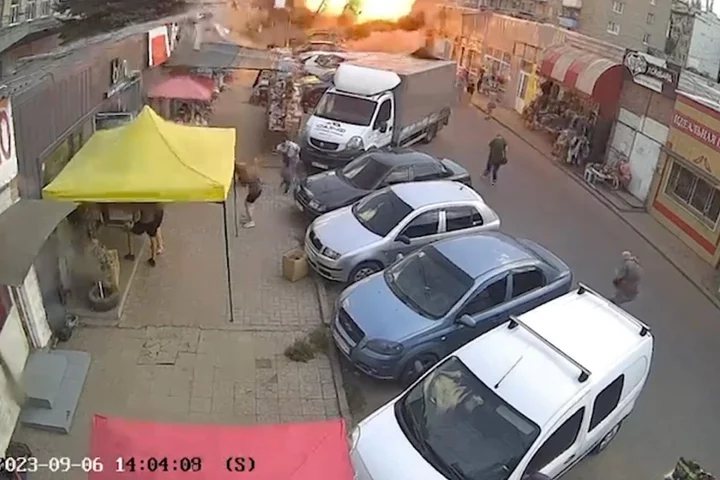
At least 17 dead in Russian missile strike on market in eastern Ukraine – as US secretary of state visits Kyiv
At least 17 people have been killed and dozens more wounded after a Russian missile struck a crowded outdoor market in eastern Ukraine – the attack coming as Antony Blinken, the US secretary of state, was in Kyiv for an unannounced visit. President Volodymyr Zelensky condemned the attack in the city of Kostiantynivka, saying that a child was among the dead. Kostiantynivka – which had a pre-war population of around 70,000 – sits about 20 miles (30km) from the ruined city of Bakhmut, the scene for some of the bloodiest fighting of Russia’s invasion. Police said that nearly 30 stalls, a pharmacy, an apartment block, a bank, and a number of cars were damaged as the missile hit at 2pm local time. Officials said more than 30 people were injured. Video footage of the strike showed people looking up to the sky as they heard a missile approaching. Seconds later they are running for cover or falling to the ground after a huge explosion. Another video released by police showed rescuers searching through the kiosks and, as bodies were taken out in black sacks, people shouting: “Who have you found?” It also showed the floor of the pharmacy covered in blood, as a police spokeswoman can be heard saying: “At the moment of the strike civilians were here, they were buying medicines and this is what happened. People died here.” “This Russian evil must be defeated as soon as possible,” Mr Zelensky said on the Telegram messaging app. “When someone in the world still attempts to deal with anything Russian, it means turning a blind eye to this reality. The audacity of evil. The brazenness of wickedness. Utter inhumanity.” He later told a press conference in Kyiv that he believed it had been a deliberate attack on “a peaceful city”. Hours before the strike on Kostiantynivka, booms could be heard in the capital Kyiv as the train carrying Mr Blinken wound its way to the city, the Russians appearing to want to herald his arrival with a missile attack. No casualties were reported in the capital but local officials said one person was killed in the Odesa region where Russian missiles also fell. Mr Blinken’s two-day visit is a show of Washington’s continued support for Mr Zelensky and the Ukrainian war effort. The secretary of state is the first senior US official to visit Kyiv since its counteroffensive against Vladimir Putin’s forces began in early June. Mr Blinken met with Mr Zelensky on Wednesday and also held talks with foreign minister Dmytro Kuleba. Mr Blinken is also expected to announce a new package of US assistance. The total package will be worth up to $1 billion (£800 million), but may not all be announced by Mr Blinken in Kyiv. “We want to make sure that Ukraine has what it needs, not only to succeed in the counteroffensive, but has what it needs for the long term, to make sure that it has a strong deterrent,” Mr Blinken said standing alongside Mr Kuleba. A US State Department official said Washington wanted to discuss how the counteroffensive was going and assess battlefield needs as well as any steps that might be required to shore up Ukraine’s energy security before winter. “I think what’s most important is that we get a real assessment from the Ukrainians themselves,” the official told Reuters. “We want to see, and hear how they intend to push forward in the coming weeks.” When asked about Mr Blinken’s visit, Dmitry Peskov, spokesperson for the Kremlin, said that Moscow believed Washington planned to continue funding Ukraine’s military “to wage this war to the last Ukrainian”. During his train ride to Kyiv, Mr Blinken held talks with Denmark’s prime minister Mette Frederiksen, who was conducting her own visit to Kyiv. The US secretary of state thanked Ms Frederiksen for Denmark’s donation of F-16 fighter jets to Ukraine and its membership of a coalition of nations – including the UK – training Ukrainian pilots. Denmark and the Netherlands announced last month they would supply more than 60 US-made F-16s as soon as pilots are trained to fly them. They are the first countries to offer the jets. Also on Wednesday, Ukraine’s parliament approved the appointment of Rustem Umerov as the country’s new defence minister. Mr Umerov replaces Oleksii Reznikov, who helped secure billions of pounds of Western military aid, but was sacked by Mr Zelensky. Mr Reznikov’s ministry was dogged by a number of scandals involving corruption allegations. The former minister did not face corruption allegations himself, but says he is the victim of a smear campaign. Reuters and the Associated Press contributed to this report Read More The Body in the Woods | An Independent TV Original Documentary The harrowing discovery at centre of The Independent’s new documentary Russian missile turns Ukrainian market into fiery, blackened ruin strewn with bodies US lawmakers visiting The Hague say Russian President Putin is committing genocide in Ukraine Paul Whelan seen for first time in years in rare video inside Russia prison
2023-09-07 02:52
